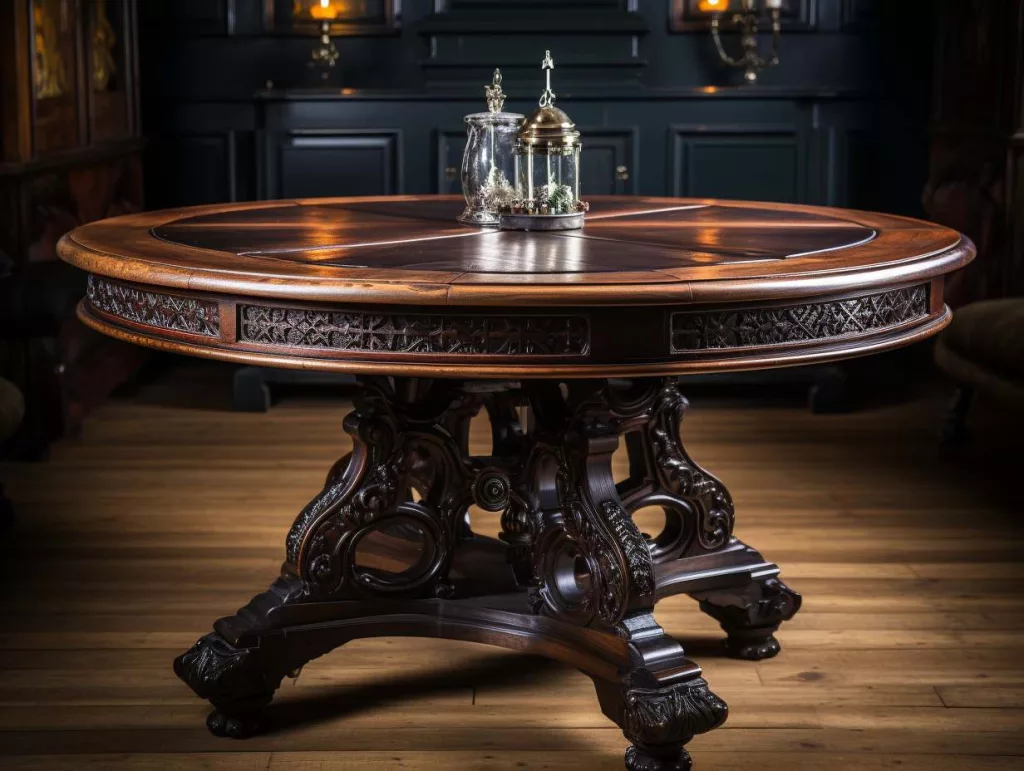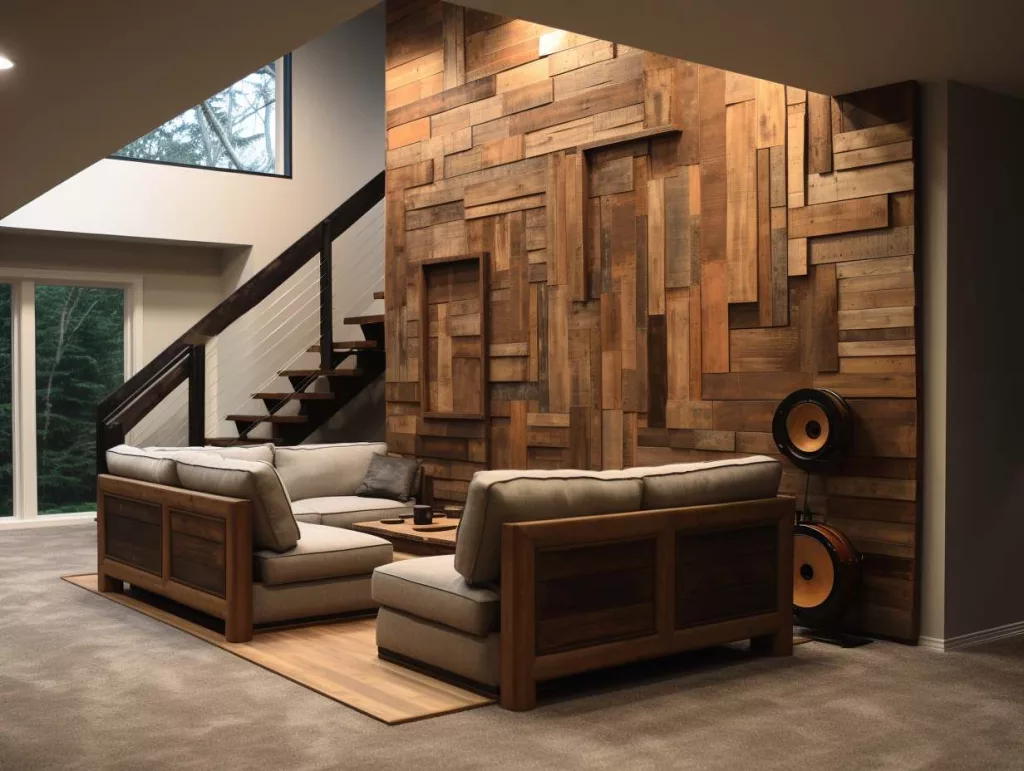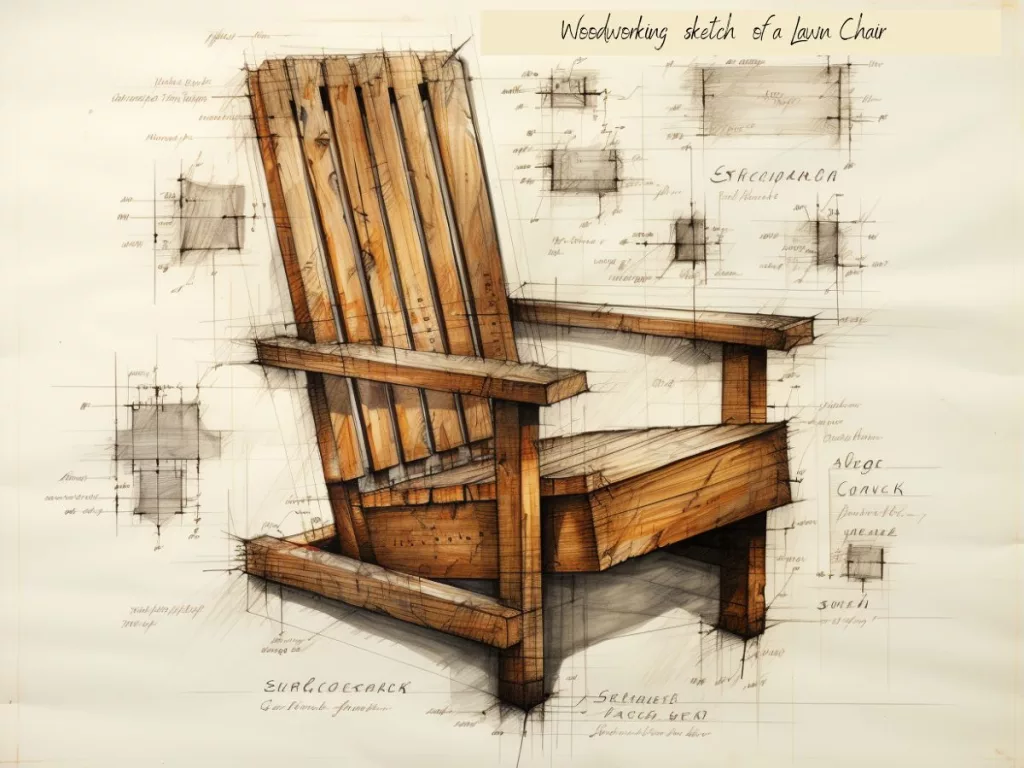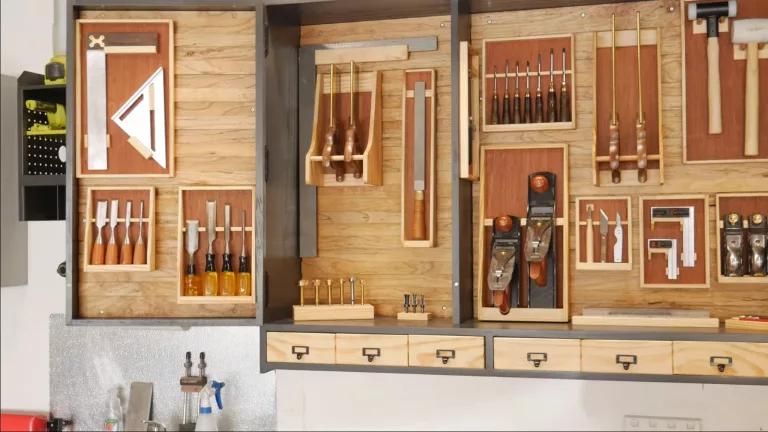The Art of Woodworking: Mastering Craftsmanship and Boosting Creativity
Welcome to the fascinating world of woodworking! This isn’t just a craft; it’s a journey through history, creativity, and skill. Let’s dive into the heart of woodworking and explore its timeless appeal and fundamental principles.

The Timeless Appeal
Historical Significance and Evolution
Woodworking isn’t a new trend; it’s an ancient art that has evolved alongside humanity. From the simple tools of early civilizations to the intricate carvings in medieval furniture, woodworking has always been a reflection of the times. I remember my grandfather’s tales of traditional woodworking techniques, passed down through generations, each adding their own touch to the craft. It’s a story of innovation and tradition, where each chisel mark tells a tale of the past.

Movement in the Modern Era
Fast forward to today, and woodworking has transformed with technology. But at its core, it remains an art form that balances functionality with beauty. Modern woodworking isn’t just about producing items; it’s about expressing creativity and sustainability. It’s fascinating to see how contemporary woodworkers blend traditional techniques with modern designs, creating pieces that are both artistic and practical.

The Basics
Essential Tools and Materials
Every woodworker’s journey starts with understanding the tools and materials.
- From basic tools like the humble saw to more complex equipment like the sophisticated lathe, each has its unique story and purpose.
- Experimenting with different types of wood is crucial, as each variety has its own unique texture and character.
- Selecting the appropriate wood and tool for a project is akin to choosing the right ingredients for a recipe; it’s essential for success.
- The choice of wood and tools significantly impacts the quality and outcome of the woodworking project.

Safety First: Best Practices
Safety in woodworking is crucial, and I’ve learned its importance firsthand. Here are some key safety tips that have been lifesavers in my workshop:
- Always Wear Safety Gear: Never skip on safety goggles, ear protection, and a dust mask.
- Proper Tool Handling: Familiarize yourself with each tool’s use and never bypass their safety features.
- Keep Tools Sharp and Maintained: Dull tools are more dangerous, so keep them in good condition.
- Right Tool for the Job: Use tools only for their intended purposes to avoid accidents.
- Maintain a Clean Workspace: A clutter-free workshop reduces tripping hazards and improves safety.
- Secure Workpieces Properly: Use clamps or a vise to hold your work steady and safe.
- Stay Focused and Alert: Avoid working when tired or distracted.
- Hand Safety: Keep hands clear of blades and cutting edges.
- Power Tool Precautions: Disconnect power before changing blades or making adjustments.
- First Aid Knowledge: Know basic first aid and keep a kit accessible in your workshop.
Techniques and Skills
Embarking on a woodworking journey is like learning a new language – it’s all about mastering the techniques and skills that turn a simple piece of wood into a masterpiece. Let’s roll up our sleeves and delve into the core skills that make woodworking such an enriching craft.
Mastering the Fundamentals
Cutting, Shaping, and Joining Wood
Cutting, shaping, and joining are the ABCs of woodworking. Each cut and curve brings the wood to life. I remember my first project – a simple birdhouse. It’s not just about following steps; it’s about understanding the ‘why’ behind each technique.
Cutting, shaping, and joining truly are the foundational skills in woodworking. Here are some fundamental techniques that bring these skills to life:
- Choosing the Right Saw: Understanding the different types of saws (e.g., hand saw, table saw, jigsaw) and their specific uses for precise cuts.
- Mastering Dovetail Joints: Learning the intricate process of creating dovetail joints for strong, interlocking connections.
- Effective Sanding Techniques: Techniques for sanding wood to achieve a smooth finish, including the use of various grits and sanding tools.
- Accurate Measuring and Marking: Using rulers, squares, and marking tools to ensure precise measurements and cuts.
- Using Chisels for Fine Shaping: Employing chisels for detailed wood shaping, emphasizing control and accuracy.
- Gluing and Clamping for Joining: Understanding the proper use of wood glue and clamps to securely join pieces without damaging the wood.
- Router Basics for Edging and Grooving: Utilizing a router for creating edges, grooves, and intricate patterns in wood.
- Understanding Wood Grain: Learning to read and work with the wood grain for better results in cutting and shaping.
- Safe Use of Power Tools: Emphasizing safety and proper techniques when using power tools like circular saws and drill presses.
Finishing Techniques
A good finish not only enhances the beauty of wood but also protects it. I’ve experimented with various finishes, from oil-based to water-based, and each has its charm and challenges.
This is a comprehensive article on Wood Preservation.
Advanced Skills
Intricate Carving Methods
Carving in woodworking is where my personal expression and the art of craftsmanship beautifully converge. It’s a process that transforms a simple piece of wood into a reflection of my creativity and style. Each carved piece is a part of me, a tangible expression of my journey and a testament to my connection with the craft.
- Intricate Carving Techniques: Each method, from detailed relief carving to rhythmic chip carving, has its own charm and challenges.
- Specialized Tools: Using tools like gouges, chisels, and knives, I shape and detail the wood, each tool playing its unique role.
- Conversing with the Wood: Every stroke is a dialogue with the wood’s grain, uncovering its hidden stories and character.
- A Meditative Process: The act of carving is meditative, requiring patience and precision, making each session a tranquil experience.
Incorporating Modern Technology
In today’s world, woodworking isn’t just about traditional tools. Modern technology like CNC machines and laser cutters have opened up new possibilities. I was skeptical at first, but once I embraced these technologies, my projects reached new levels of precision and creativity.
Creativity in the Art of Woodworking
Woodworking is more than just a skill; it’s a canvas for creativity. It’s where your imagination meets the grain of the wood to create something truly unique. Let’s explore the creative heart of woodworking, where design meets functionality, and every project tells a story.
Design and Creativity in Wood Projects
The Design Process
Designing a woodworking project is like painting, but with wood as your medium. I remember sketching my first coffee table on a napkin – a rough concept that evolved into a detailed plan. It’s a process of transforming your vision into a tangible piece. It’s about asking the right questions: What’s the purpose? Who’s it for? What story does it tell?

Balancing Functionality and Aesthetics
The true art of woodworking lies in balancing functionality with aesthetics. A beautiful piece that doesn’t serve its purpose is like a missed opportunity. I learned this while crafting a chair that looked great but wasn’t comfortable. A woodworker learns how to strike this balance, ensuring that your projects are not only visually appealing but also practical and user-friendly.
Inspirational Projects
Showcase of Innovative Designs
Every woodworker has a unique style, and there’s so much we can learn from each other. I’ve been inspired by the creativity of fellow woodworkers, from intricate inlays to bold, modern designs. It’s a celebration of creativity and innovation in the woodworking community.
Case Studies of Exceptional Craftsmanship
There’s something special about seeing a project come to life, especially when it’s done with exceptional craftsmanship. These aren’t just stories; they’re lessons in attention to detail, problem-solving, and dedication. From a hand-carved heirloom chest to a sleek, modern bookshelf, these case studies will inspire and challenge you to elevate your woodworking skills. I recommend following woodworking magazines, you can purchase old issues near you, and follow online magazines. A few bucks a month is worth investing.
Learning from the Experts
Woodworking is an art honed over time, and who better to learn from than the masters themselves? Imagine sitting down with a master craftsman, a cup of coffee in hand, listening to stories of their woodworking journey. I’ve had the privilege of interviewing several master craftsmen, and their insights are goldmines of knowledge. From their favorite tools to their biggest mistakes, these interviews are a window into the soul of woodworking.
There’s a saying that experience is the best teacher, and it couldn’t be truer in woodworking. These aren’t just tips and tricks, but life lessons on patience, precision, and the joy of creating with your hands. An interview with Mr. John Barnes, a famous woodworker in Houston, Texas is below.
Hobbydisiac: What sparked your passion for woodworking?
John Barnes: It all started in my father’s workshop. The transformation of wood into art fascinated me as a child.
Hobbydisiac: Which tool is your favorite and why?
John Barnes: The hand plane. It requires skill and patience, and there’s a unique satisfaction in smoothing wood by hand.
Hobbydisiac: Any significant learning experience you’d like to share?
John Barnes: A miscalculation on a cabinet project taught me the invaluable lesson of ‘measure twice, cut once.’
Hobbydisiac: What keeps you motivated in this craft?
John Barnes: The joy of creation and the challenge of each new project.
Hobbydisiac: Advice for beginners?
John Barnes: Start with the basics and never quit.
Building Expertise
Recommended Courses and Workshops
Whether you’re a beginner or looking to sharpen your skills, the right course or workshop can make a world of difference. I’ll recommend some of the best courses and workshops that have helped me and others in the woodworking community. These are handpicked for their quality of instruction and practical value.
- This is for learning 3D design of wooden items in SketchUp. (Read the user reviews and rating comments first)
- You can follow this channel: Steve Ramsey – Woodworking for Mere Mortals
Following video will give you basics of this art.
Self-Learning vs. Formal Education
The debate between self-learning and formal education in woodworking is an interesting one. I’ve experienced both and can tell you that each has its merits. We’ll explore how you can blend self-learning with formal education to get the best of both worlds.
Enhancing Your Experience
Woodworking is not just about the individual; it’s a community affair. Let’s look at how being part of a community can enhance your woodworking experience and what the future holds for this craft.
The Role of Community
Joining Woodworking Groups and Forums
There’s a certain magic in sharing your passion with like-minded individuals. Joining woodworking groups and forums can be incredibly rewarding. You can share the problems you are facing, and even ask any question related to the project you have.
Some large groups in Facebook are as follows:
And Woodworking Crafts is very popular in Quora.
Collaborative Projects and Community Workshops
Collaborative projects and community workshops are where the fun really begins. Working on a project with fellow woodworkers is not just about building something together; it’s about learning from each other and building friendships. I’ll highlight some collaborative projects that have left a lasting impact on me.
The Future of Woodworking
Emerging Trends and Technologies
Woodworking is an ever-evolving craft. From digital fabrication tools like CNC machines to advances in sustainable materials, the future of woodworking is exciting. We’ll delve into some of these emerging trends and technologies that are shaping the future of this craft.
Sustainability and Eco-Friendly Practices
In a world increasingly conscious of its environmental footprint, woodworking is no exception. We’ll explore how sustainable practices and eco-friendly materials are becoming integral parts of woodworking. It’s about creating beautiful pieces responsibly.
Conclusion
Woodworking is not just a hobby or a profession; it’s a passion that grows with you. Each project, each challenge, and each success is a step in a journey that shapes not just your skills, but also your character. I’ve found that the patience, attention to detail, and creativity demanded by woodworking have enriched my life beyond the workshop. It’s a journey that teaches resilience, problem-solving, and the joy of seeing your vision come to life.
What does woodwork mean?
Woodwork refers to the skill or craft of creating objects, structures, or artistic pieces from wood. It involves various techniques like cutting, shaping, carving, and joining wood to construct furniture, decorative items, or functional structures. Woodworking combines artistry and craftsmanship, requiring both creativity and technical knowledge.
What is a woodworker?
A woodworker is someone who works with wood to create a variety of objects. This can include crafting furniture, decorative items, sculptures, and other wooden artifacts. Woodworkers combine technical skill with artistic ability to transform wood into functional or artistic creations.
What are woodworkers called?
Woodworkers are often simply called “woodworkers,” but they can also be known by more specific titles based on their expertise, such as cabinetmakers, carvers, joiners, or turners.
Is woodworker a profession?
Yes, woodworking can be a profession. Professional woodworkers are skilled artisans who create a variety of objects from wood, ranging from functional furniture to intricate art pieces. They may work in different sectors, including manufacturing, custom design, or restoration.
What is the difference between a carpenter and a woodworker?
A carpenter primarily focuses on constructing, installing, and repairing building frameworks and structures, including houses and furniture, often working on-site. A woodworker, on the other hand, typically specializes in crafting finer, more detailed wooden items like furniture, decorative pieces, and instruments, often working in a workshop setting.
What is another name for woodworking?
Another name for woodworking is carpentry. Carpentry is often used as another name for woodworking, mainly because both involve crafting with wood. However, carpentry typically focuses more on construction and structural work, while woodworking encompasses a broader range of skills including artistic and detailed creations.






